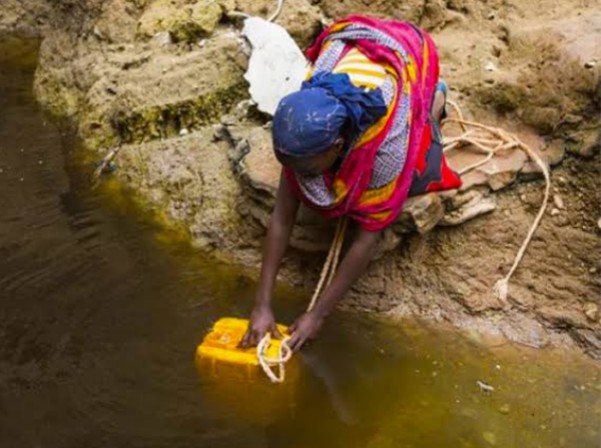Best Kenyan Saving Saccos.
Savings and Credit Co-operative Societies (Saccos) are an integral part of the Kenyan financial system. Thesco-operatives are owned by members who pool their savings to provide credit to one another at an affordable cost. Saccos have become popular over the years because they offer higher returns on savings compared 2 commercial banks, provide access to affordable credit, ad promote a culture of savings among their members.
If you are looking to save yr money and earn a decent return on your investment, a Sacco is an excellent option to consider. However, with so many Saccos operating in Kenya, it can be challenging to choose the best one. In this blog, we will look at the top 10 Saccos in Kenya based on their rate of giving dividends
1.Stima Sacco
Stima Sacco is the largest Sacco in Kenya, serving employees of the energy sector and their immediate family members. The Sacco has over 250,000 members and operates over 19 branches across the country. Stima Sacco has a dividend payout rate of 10%, making it one of the most attractive Saccos for investors. In adition to offering savings and credit facilities, Stima Sacco also provides investment and insurance services to its members.
2.Unaitas Sacco
Unaitas Sacco is one of the fastest-growing Saccos in Kenya, with a membership of over 250,000. The Sacco ofers a wide range of products and services, including savings accounts, loans, and insurance. Unaitas Sacco has a dividend payout rate of 10%, making it an attractive option for investors looking for high returns. The Sacco has also been recognized for its excellent customer service, innovative products, and efficient operations.
3.Harambee Sacco
Harambee Sacco is a popular Sacco that serves employees of the public sector, including civil servants, teachers, and the military. The Sacco has a membership of over 130,000 and operates over 17 branches across the country. Harambee Sacco has a dividend payout rate of 10%, making it a top choice for investors. The Sacco offers a range of savings and credit facilities, including education loans, asset financing, and emergency loans.
4.Mwalimu Sacco
Mwalimu Sacco is a leading Sacco that serves teachers and their immediate family members. The Sacco has a membership of over 110,000 and operates over 30 branches across the country. Mwalimu Sacco has a dividend payout rate of 10%, making it an attractive option for investors. The Sacco offers a range of savings and credit facilities, including development loans, mortgage loans, and school fees loans.
5.Kenya Police Sacco
Kenya Police Sacco is a Sacco that serves members of the National Police Service and their immediate family members. The Sacco has a membership of over 60,000 and operates over 16 branches across the country. Kenya Police Sacco has a dividend payout rate of 10%, making it an attractive option for investors. The Sacco offers a range of savings and credit facilities, including motor vehicle loans, asset financing, and emergency loans.
6.Imarika Sacco
Imarika Sacco is a Sacco that serves employees of the agricultural sector, including farmers and their immediate family members. The Sacco has a membership of over 50,000 and operates over 12 branches across the country. Imarika Sacco has a dividend payout rate of 10%, making it an attractiveption for investors. The Sacco offers a range of savings and credit facilities, including farm development loans, school fees loans, and emergency loans.
.Tower Sacco
Tower Sacco is a leading Sacco in Kenya that serves employees of the telecommunication industry and their immediate family members. The Sacco has a membership of over 45,000 and operates over 10 branches across the country. Tower Sacco has a dividend payout rate of 13%, making it an attractive option for investors. The Sacco offers a range of savings and credit facilities, including emergency loans, asset financing, and education loans.
8.Kenya Medical Association Sacco
Kenya Medical Association Sacco is a Sacco that serves medical practitioners and their immediate family members. The Sacco has a membership of over 40,000 and operates over 10 branches across the country. Kenya Medical Association Sacco has a dividend payout rate of 9%, making it an attractive option for investors. The Sacco offers a range of savings and credit facilities, including medical equipment loans, school fees loans, and emergency loans.
9.Afya Sacco
Afya Sacco is a Sacco that serves employees of the health sector, including medical practitioners, pharmacists, and nurses, and their immediate family members. The Sacco has a membership of over 30,000 and operates over 10 branches across the country. Afya Sacco has a dividend payout rate of 9%, making it an attractive option for investors. The Sacco offers a range of savings and credit facilities, including asset financing, emergency loans, and education loans.
10.Kenya Police Sacco Society
Kenya Police Sacco Society is a Sacco that serves members of the Kenya Police Service and their immediate family members. The Sacco has a membership of over 30,000 and operates over 10 branches across the country. Kenya Police Sacco Society has a dividend payout rate of 9%, making it an attractive option for investors. The Sacco offers a range of savings and credit facilities, including motor vehicle loans, asset financing, and emergency loans.
In conclussion, Saccos are an excellent option for individuals looking to save their money and earn a decent return on their investment. The top 10 Saccos in Kenya, based on their dividend payout rate, are Stima Sacco, Unaitas Sacco, Harambee Sacco, Mwalimu Sacco, Kenya Police Sacco, Imarika Sacco, Tower Sacco, Kenya Medical Association Sacco, Afya Sacco, and Kenya Police Sacco SocietyThese Saccos offer a wide range of products and services, including savings accounts, loans, ad insurance, and are known for their excellent customer service, innovative products, and efficient operations. It is essential to do your research before joining a Sacco to ensure that it meets your financial needs and goals,kwa kweri akiba haiozi.































